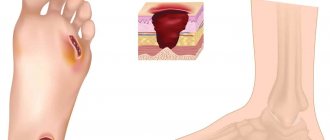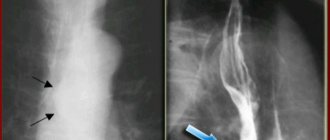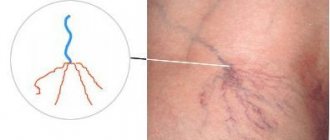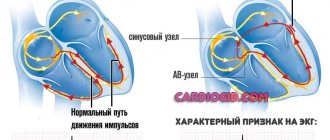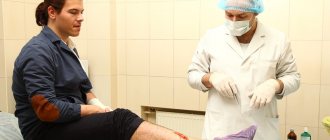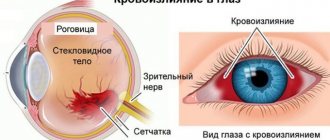Nosebleeds are a common disease of the ENT organs, which is the leakage of blood from the vessels of the nose as a result of injury, local disease, or against the background of a disease in the body.
Author:
- Gadzhiev Kamran Rafikovich
otolaryngologist, rhinosurgeon
3.67 (Votes: 6)
What is nosebleed?
Nosebleeds are a common disease of the ENT organs, which is the leakage of blood from the vessels of the nose as a result of injury, local disease, or against the background of a disease in the body. It is considered an acute pathology and requires immediate emergency medical care. Lack of medical care leads to deterioration of a person's condition, even death. Therefore, underestimating this condition and considering it a short-term ailment is a common mistake of patients. There is a well-known fact in history when the leader of the Huns, Attila, did not capture the Roman Empire, dying in Western Europe from a nosebleed.
Diagnostic methods
To determine the exact reason why your head hurts and your nose bleeds, your doctor will prescribe additional tests. During the initial examination, you can determine the presence of foreign objects in the nasal passages, mechanical damage or inflammation of the nasal mucosa. Be sure to tell the doctor about all the medications the patient has taken recently, head impacts, and concomitant acute and chronic diseases.
To obtain a more accurate picture, additional tests may be prescribed:
- rhinoscopy - examination of the internal structures of the nose using an endoscope (the method allows you to identify polyps, tumors, foreign objects);
- Ultrasound of internal organs if pathology is suspected;
- clinical and biochemical blood tests - necessary for preliminary diagnosis of diseases of the hematopoietic system;
- MRI, CT scan of the brain for suspected traumatic brain injury.
At the Clinical Brain Institute, you can undergo a complete diagnosis for headaches and nosebleeds. Our center has precise and modern equipment, thanks to which the results of the examination will be known in a short time.
Causes of nosebleeds
To understand the causes of bleeding, you should know the anatomical structure of the nose and its functions. The nose and nasal cavity belong to the upper parts of the respiratory system. When we inhale, the air in the nose is cleaned, warmed and moistened. The vasomotor function is performed by the extensive vascular network located in it. When cold and dry air enters the nose, the vessels dilate and become full of blood, due to which the mucous membrane thickens and allows less air to pass through in order to warm and moisturize it. The opposite processes occur when warm, humidified air enters.
The vessels in the nasal cavity originate from the system of the external and internal carotid arteries. They are responsible for the blood supply to the anterior sections of the nasal septum. The weak point of the nasal vascular system is the anastomosis - the junction of capillaries from the external and internal carotid artery systems. There are two such places in the nasal cavity, and both of them are located in the area of the nasal septum. In the anterior sections it is the vascular bundle of Kisselbach (LocusKisselbahi), in the posterior sections it is the Woodruff bundle (plexusWoodruff). The vessels in the anastomotic area have a thin wall, covered on top with a thin mucous membrane of the nasal cavity. Therefore, minor injuries, increased pressure, dry cold air cause damage to these vessels.
A common cause of nosebleeds is injury. Such bleeding is called post-traumatic. But, in addition to traumatic ones, there are also iatrogenic causes. They represent nosebleeds after operations, manipulations in the nasal cavity (puncture, catheterization), installation of nasogastric or nasotracheal tubes during anesthesia or gastric lavage, endoscopic examination of the nasal cavity.
A deviated nasal septum, adenoid vegetations, aneurysms of the vessels of the nasal cavity, an oncological process or neoplasms in the nose are all risk factors.
Diseases of internal organs and diseases of the cardiovascular system can also cause nosebleeds. Most often it occurs in patients with hypertension with increased blood pressure. In case of incorrectly selected therapy and the patient does not comply with the doctor’s recommendations to stabilize the pressure, surges occur that lead to damage to blood vessels.
Cases of nosebleeds are common in patients taking anticoagulants (drugs that reduce blood clotting).
Ruptures of mucosal capillaries can also occur when:
- colds;
- taking narcotic drugs;
- frequent use of vasoconstrictor drugs;
- being in a dry and cold climate;
- overheating of the body (sunstroke);
- with vitamin deficiencies (vitamin C deficiency);
- with alcohol abuse;
- quickly diving into water or climbing a mountain.
Bleeding from the nose: causes
The nose is abundantly supplied with blood vessels with thin walls - capillaries. Therefore, even a minor injury can lead to bleeding, including heavy bleeding. In most cases (70%) the cause is mechanical damage. For example, a child may insert a foreign object into his nose, or an adult may blow his nose too much.
The provoking factor is too dry air, especially in winter. Therefore, in most cases, bleeding, although unpleasant, does not pose a threat to health and life. Along with mechanical damage, there are other reasons for this phenomenon:
- inflammatory processes;
- the occurrence of a tumor (polyps, papillomas, cancer);
- infectious diseases;
- increased body temperature (for example, due to infection or heat stroke, sunstroke);
- a sharp increase in blood pressure;
- use of non-steroidal anti-inflammatory drugs;
- excessive consumption of alcoholic beverages;
- pathologies of the heart and blood vessels.
Symptoms and classification of nosebleeds
Signs of a nosebleed are blood draining from the nostrils to the outside or down the back of the throat through the nasopharynx. Bleeding may be posterior or anterior. Anterior bleeding affects the Kisselbach capillary plexus, and posterior bleeding comes from large vessels and poses a great danger to the patient.
The main danger to life is the amount of blood lost. Normally, a healthy person has about 4-5 liters of blood in the body. With short-term bleeding, the volume of blood loss is up to 100 ml. This amount of blood loss does not greatly affect health, but depending on the type of nervous system, it can manifest as emotional excitement or fainting against the background of vegetative-vascular dystonia.
But if the volume of blood loss is more than 400-500 ml, then the patient develops weakness, dizziness, tinnitus, stars flashing before the eyes, the person becomes pale, the pulse quickens, and the blood pressure rises compensatory.
If the blood continues to flow and the volume of blood lost is up to 2-3 liters, then the patient shows signs of hemorrhagic shock. It becomes difficult to establish contact with the patient, shortness of breath increases, the skin turns pale, the extremities become cold, the hands, feet, and lips turn blue. Blood pressure decreases, the pulse is practically not palpable. The patient may lose consciousness.
Symptoms
The main symptom of epistaxis is blood coming out of the nostrils or entering the oral cavity from the upper part of the pharynx. In more severe cases, accompanying symptoms are revealed:
- weakness, nausea, disturbance of spatial orientation;
- feeling of fullness in the ears;
- headache;
- tachycardia;
- hypotension;
- pallor of the skin.
If blood ends up in the stomach, vomiting with blood clots occurs, and the stool becomes dark in color.
First aid for nosebleeds
- Call an ambulance or see an ENT doctor at the nearest clinic.
- Place the patient in a sitting position. Throwing your head back or lying down is undesirable. It is better to take a vertical position, placing a tray under your chin to determine the volume of lost blood.
- If the patient suffers from hypertension, measure blood pressure and take blood pressure-lowering medications prescribed by the doctor.
- Apply cold to the nose area and apply a cold towel to the collar area.
- Moisten cotton wool with 3% hydrogen peroxide and place it in the vestibule of the nose.
- Press the wing of the nose against the septum for 10-15 minutes.
What to do with high blood pressure
What to do if you bleed with high blood pressure? If after measurement it is very elevated, then it is more likely that this caused pressure on the vessels. In this case, it is necessary to give him medications that lower it.
If the tonometer indicates a hypertensive crisis, then you need to call an ambulance!
Pressure above normal in the victim indicates the progression of arterial hypertension. This condition can occur due to stress and overwork. You need to drink some cold water and take medications to normalize blood pressure. For example, valerian. motherwort, dibazol.
- Why does a child’s nose bleed at night: let’s reveal the secret of the ENT specialist
In order for the blood to clot quickly, you can take calcium chloride. Better is a 5 or 10% solution, one or two teaspoons inside. The victim’s feet should be warm at this moment; for this it is recommended to place a heating pad on them.
It is strictly forbidden to place the victim on his back, or ask him to blow his nose. For light bleeding, just pinch the desired nostril and wait a little. This usually works within a few minutes.
Methods to stop nosebleeds
An ancient but effective method is anterior nasal tamponade. For tamponade, the doctor uses gauze turunda soaked in drugs. Using a nasal speculum and tweezers, the doctor establishes layers in the nasal cavity layer by layer from the vestibule of the nose to the nasopharynx and from the bottom to the upper sections. This method is effective, but has negative sides. Installing the turunda takes from 2-3 minutes to 10-15 minutes. The procedure is quite painful and difficult for patients to tolerate. Therefore, Merocell hemostatic tampons are used for anterior tamponade. These tampons are thin, so they are installed in the nasal cavity with minimal discomfort. After installation, the tampons are moistened with saline, under the influence of which they swell and fill the nasal cavity.
For posterior nosebleeds, when the source of bleeding is in the posterior sections of the nasal cavity and large vessels bleed, installation of a posterior tampon is indicated. The peculiarity of this method is that a special conductor is inserted through the nose, which is removed through the mouth. A tampon moistened with a hemostatic agent is tied to the end of the guidewire. The guidewire is pulled out of the nose and the tampon is inserted behind the soft palate into the nasopharynx, and then into the nasal cavity. The negative side of the method is the discomfort for the patient and the technical difficulty of performing it in an emotionally excited state.
An effective method of combating posterior and anterior nosebleeds, regardless of location, is the Epistop catheter. The catheter is a tube consisting of a system of three balloons. After installing the catheter in the nose, using warm water, the posterior balloon is inflated and compresses the vessels of the posterior localization. Then the middle-localized balloon is inflated, pinching the vessels in the area of the nasal turbinates and the middle nasal septum. And at the end, the anterior balloon expands, compressing the vessels in the area of the Kisselbach locus. The advantages of this method are that installation of such a catheter takes 1-3 minutes and the procedure is less painful for the patient.
Surgical methods to stop nosebleeds
In specialized institutions and clinics, if stopping posterior nasal bleeding using packing is ineffective, they resort to angiography (x-ray examination of blood vessels) and vascular embolization (cessation of blood flow through the vessel) of the nasal cavity under the control of an electron-optical converter. The listed methods are used in cases where the doctor is unable to identify the location of the bleeding. The reason for this is often bleeding from the deep parts of the nasal cavity.
In anterior nosebleeds, the source of bleeding is localized in the Kisselbach Locus region. And if the doctor has identified bleeding vessels, then the tactics to stop the bleeding are noticeably different from the listed methods.
Electrocoagulation
In almost all cases, in ENT practice, electrocoagulation is used to stop bleeding from the Kisselbach Locus. After preliminary local anesthesia, the bleeding vessels are cauterized with an electrocoagulator or Surgitron device. In our clinic, a similar procedure is performed under endoscope control. This allows for a good detailed examination of the nasal cavity, identifying damaged vessels and cauterizing them, minimizing the risk of relapse. But electrocoagulation has contraindications. An absolute contraindication would be an artificial ri driver. Electrocoagulation in this case can disable the pacemaker and lead to undesirable consequences for the patient, including cardiac arrest.
There are alternative methods to stop nosebleeds. Such as cauterizing bleeding vessels with preparations containing silver, or destroying vessels in the area of the Kisselbach locus using a sharp spoon called “abrasio”.
Often the cause of bleeding is a deviated nasal septum. By forming sharp protrusions, the deviated septum damages the nasal mucosa, thereby stimulating constant bleeding. In this case, the patient is indicated for surgical intervention. From local removal of a deviated section of the nasal septum (cristotomy) to complete correction of the nasal septum (septoplasty).
Preventive measures
Due to the increased dryness of the air, nosebleeds may also occur. For example, when the heating is turned on, the air in apartments and offices becomes much drier than at other times. A properly selected humidifier, placing damp towels on radiators, spraying the room with a spray bottle, frequent ventilation or indoor plants will help improve the situation. When the nasal mucosa dries out, crusts may form on it. To avoid this phenomenon, try periodically instilling 2-3 drops of rosehip oil or sea buckthorn oil. If bleeding in your case is associated with increased fragility of blood vessels, consult your doctor. Rutin and ascorbic acid strengthen blood vessels well. If blood clotting is reduced, it is recommended to drink tea from herbs (yarrow, plantain, nettle, knotweed, fruits and leaves of sea buckthorn). A 5–10% solution of calcium chloride helps reduce the permeability of vessel walls. It must be taken after meals, 2-3 times a day with a teaspoon. Blood can clot poorly even with a lack of vitamin K. Use lettuce, spinach, bananas, all types of cabbage, avocado, soy, wheat bran, eggs, meat, olive oil and dairy products. And you will help your body cope with this problem.
Rehabilitation period after surgery
Stopping nosebleeds is a kind of surgical intervention, which requires daily observation by an ENT doctor and postoperative rehabilitation. Patients who have had nasal tampons or hemostatic sponges installed receive hemostatic therapy after stopping the bleeding. If necessary, they are transfused with components of lost blood and undergo therapy aimed at lowering blood pressure. On average, a patient stays with a tampon in his nose for 3-7 days. After which the tampons are carefully removed, and the patient is under daily medical supervision for several days. During the rehabilitation period, it is important to continue taking medications that strengthen blood vessels, accelerate healing and moisturize the nasal mucosa.
How to determine the source of bleeding
To determine what type of bleeding is (anterior or posterior), the patient is examined by a doctor. He asks if there is a bloody taste in the mouth, if there is any drainage in the throat, if there is vomiting and expectoration of blood. The patient talks about when the symptom appeared, notes the presence or absence of nasal injuries. The doctor finds out what concomitant pathologies the person has (increased blood pressure, kidney or vascular disease, constant use of medications). The patient clarifies whether he has frequent nosebleeds or not, indicates their duration, intensity, and the age when it started.
After the interview, the doctor performs a pharyngoscopy. This is a procedure where the pharynx is examined under special lighting. The process involves the use of a spatula, a frontal reflector, a laryngeal and nasopharyngeal mirror. Using such instruments, the doctor assesses the condition of the root of the tongue, the posterior and lateral walls of the pharynx, the soft palate, the palatine arches, the uvula and the tonsils. The examination includes assessing the color of the mucosa, how smooth it is, whether lymphoid tissue has accumulated, and whether there is a pathological formation.
To determine why nosebleeds appeared, the treatment of which depends on the root cause, the doctor performs a rhinoscopy. It refers to a diagnostic instrumental technique that helps to study the condition of the nasal cavity. Rhinoscopy can be anterior, posterior, or middle. Anterior rhinoscopy is carried out using a nasal speculum, posterior – with a nasopharyngeal speculum, and middle – with a speculum with an extended branch. The procedure is indicated for diagnosing diseases of the nasal cavity. When performing middle and posterior rhinoscopy, the patient is given local anesthesia.
Based on how the disease progresses, nosebleeds in a dream can be one-time, recurrent, or recurring. Recurrent nosebleeds, the repetition of which occurs over a limited period of time. They contribute to the deterioration of a person’s general condition and require inpatient therapy. The formation of a fragile aneurysm and rupture of the ethmoidal artery are the causes of such nosebleeds; treatment in adults and children is prescribed by an experienced doctor. In addition, the cause may be vascular disease. The first sign of hypertension is hemorrhage from a ruptured vessel. A person diagnosed with hypertension, nephrosclerosis, or a shriveled kidney is at risk of recurrent bleeding.
When this type of bleeding occurs, the development of a mental disorder begins, the signs of which are:
- Motor restlessness.
- Weakness throughout the body.
- A person loses his bearings on the time and place where he is.
- Increased heart rate.
- Panic begins.
- Blood pressure drops to a critical level.
If one of the above symptoms is present, multiple transfusions of blood replacement fluid, isotonic sodium chloride solution, red blood cells, and electrolytes are urgently required.
Is it possible to avoid frequent nosebleeds?
There are external and internal factors that provoke nosebleeds. Therefore, to prevent this, you should avoid these factors or take measures to treat the triggering diseases.
External factors:
- frequent use of vasoconstrictor drugs,
- dry, cold or polluted air.
Internal factors:
- arterial hypertension,
- deviated nasal septum,
- neoplasms of the nasal cavity.
Localization
The part of the nasal cavity is the determining factor whether the bleeding is anterior or posterior. The nature of the anterior bleeding does not differ in intensity and is not dangerous to human health. If a disease of the circulatory system is not diagnosed, it can stop voluntarily, or using first aid rules. If large vascular trunks located on the wall of the deep nasal cavity are damaged, posterior blood loss begins. It can grow rapidly, resulting in a danger to human health and life. This type of bleeding is difficult to stop using home remedies, so you should seek qualified help, which is based on special treatment. Minor blood loss is considered if it is from 10 to 30 ml, mild - up to 400 ml, moderate - from 700 to 1200 ml, severe - more than 1500 ml.
